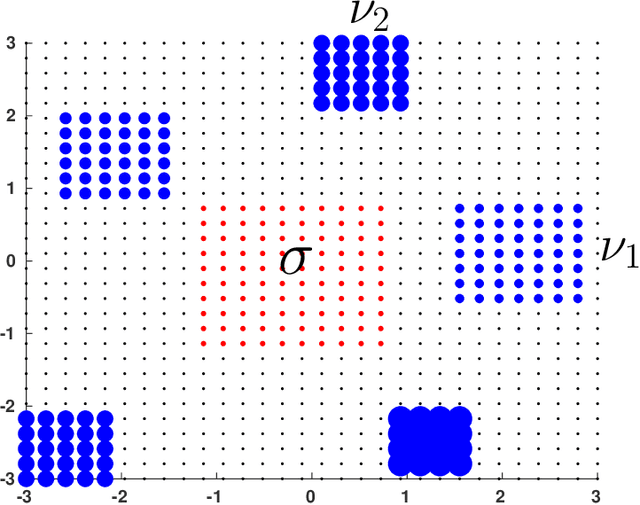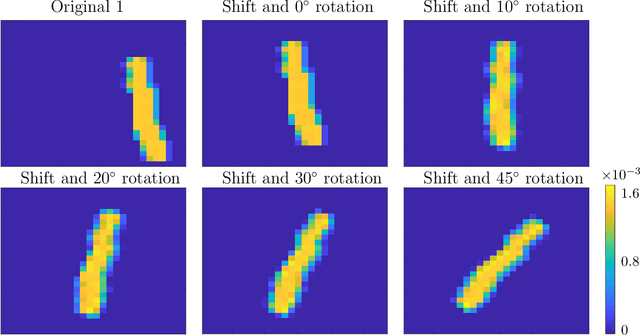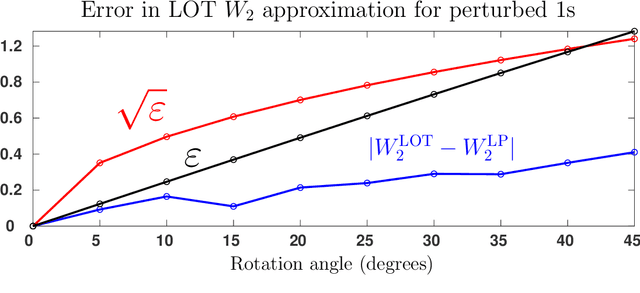Linear Optimal Transport Embedding: Provable fast Wasserstein distance computation and classification for nonlinear problems
Paper and Code
Aug 20, 2020



Discriminating between distributions is an important problem in a number of scientific fields. This motivated the introduction of Linear Optimal Transportation (LOT), which embeds the space of distributions into an $L^2$-space. The transform is defined by computing the optimal transport of each distribution to a fixed reference distribution, and has a number of benefits when it comes to speed of computation and to determining classification boundaries. In this paper, we characterize a number of settings in which LOT embeds families of distributions into a space in which they are linearly separable. This is true in arbitrary dimension, and for families of distributions generated through perturbations of shifts and scalings of a fixed distribution. We also prove conditions under which the $L^2$ distance of the LOT embedding between two distributions in arbitrary dimension is nearly isometric to Wasserstein-2 distance between those distributions. This is of significant computational benefit, as one must only compute $N$ optimal transport maps to define the $N^2$ pairwise distances between $N$ distributions. We demonstrate the benefits of LOT on a number of distribution classification problems.
 Add to Chrome
Add to Chrome Add to Firefox
Add to Firefox Add to Edge
Add to Edge